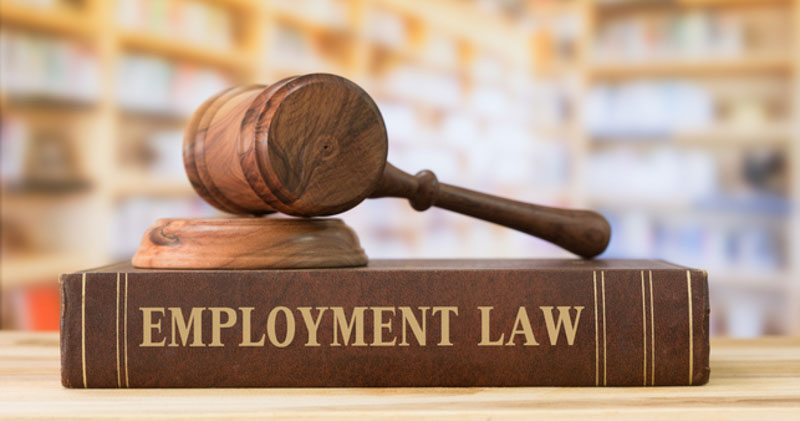
Equal employment opportunity (EEO) is when all employees are treated fairly and equally in all aspects of their jobs. This means they have equal access to employment opportunities based solely on their ability to do the job, regardless of personal attributes such as gender, race, colour or creed.
Equal employment opportunities lead to diversity in the workplace. An employer can create workplace diversity by employing people from a range of different social and ethnic backgrounds and of different genders or sexual orientations, for example. Different people have different perspectives, experience and knowledge which they can bring to their role which may enhance work practices and enrich the workplace.
Equal Opportunity Employment Legislation In Australia
In Australia, there are various legal frameworks in place to ensure employees are not unfairly disadvantaged on account of traits such as race and ethnicity, gender, religious affiliation, age, sexual orientation, socioeconomic status, or physical and mental disability.
Equal opportunity legislation protects the right to equal opportunities in the workplace for all employees, and is aimed at preventing discrimination and sexual harassment, and promoting gender equality, amongst other things. Discrimination is to treat someone differently or (proposing) to disadvantage employees because of a personal characteristic protected by law. Anti-discrimination legislation covers both direct and indirect discrimination. Direct discrimination is when an employee is treated unfairly because of a protected characteristic. Indirect discrimination is when the employee is treated the same as everyone else, but because of their personal attributes it puts them at an unfair disadvantage.
Everyone in the workplace has rights and responsibilities under equal opportunity and anti-discrimination law to prevent discrimination, harassment, vilification or victimisation.
At a National level the Australian Human Rights Commission (AHRC) has the power to enforce federal EEO and anti-discrimination legislation. If a person believes they have been discriminated against in a manner that is prohibited by this legislation, they can lodge a complaint with the AHRC.
Federal legislation that covers equal opportunities and discrimination in employment includes:
Commonwealth laws and the state or territory laws generally overlap and prohibit the same type of discrimination, however both apply, and an exception under one may not be an exception under the other.
State or territory legislation and bodies that seek to enforce EEO and prevent discrimination are:
Australian Capital Territory – Discrimination Act 1991
Northern Territory – Anti-Discrimination Act 1996
South Australia – Equal Opportunity Act 1984
Tasmania – Anti-Discrimination Act 1998
Western Australia – Equal Opportunity Act 1984.
New South Wales – Anti-Discrimination Act 1977
In New South Wales,the legislation that governs EEO is the Anti-Discrimination Act 1977 (NSW). This legislation prohibits discrimination, among other things, on the grounds of race, work status, gender identity and sexual orientation. Sexual harassment in the workplace is also prohibited.
Queensland – Anti-Discrimination Act 1991
EEO in the workplace and for work related matters in Queensland is protected by the Anti-Discrimination Act 1991 (Qld). This Act also prohibits discrimination relating to paid or unpaid work on grounds of qualifications, and industrial, trade, professional or business organisation membership.
Victoria – Equal Opportunity Act 201
The Equal Opportunity Act 2010 (Vic) covers discrimination in employment, as well as sexual harassment and victimisation at work. Employers have an obligation to take reasonable measures to protect employees, job applicants and contractors as well as people who are associated with them, such as carers, friends or relatives from discrimination, (sexual) harassment, bullying or victimisation.
The above legislation makes it unlawful to discriminate on the basis of a protected personal characteristic, which means you are not allowed to discriminate against someone because of the following, for example:
race or skin colour
sex or sexual orientation
age
physical or mental disability
marital status
family or carer’s responsibilities
pregnancy
religion or political opinion
national extraction or social origin
The Benefits Of Equal Employment Opportunity Legislation
EEO and diversity in the workplace can benefit both employers and employees. It defines the culture in the workplace and sets standards and expectations within the business in relation to employer and employee interaction and opportunities for advancement.
Differing employee perspectives, experience and knowledge can enhance and improve established workplace practices. Research shows that diversity and inclusion at work can be good for business as it can lead to the following:
Effective performance and increased productivity from employees
Higher employee job satisfaction and reduced staff turnover
Creative and innovative thinking among staff
Improved staff health and wellbeing
Lower risk of discrimination and harassment in the workplace

FREE Discrimination Guide Download
Facing difficult employees and challenging bullying situations? Download our FREE guide to understand your rights and duties.
Promoting Equal Opportunities
Below are some ways you can promote EEO and diversity in your workplace:
Use multiple avenues when recruiting new staff to attract a variety of applicants from different backgrounds
Develop workplace policies and implement training to promote inclusion and cross-cultural awareness
Set up mentoring arrangements that match employees from different backgrounds to encourage open communication and promote understanding
Have grievance investigation procedures and compliant handling processes in place to manage any issues that may arise despite the above, such as allegations of workplace bullying.
If you have specific (minority) groups of people in your workplace – for example, Aboriginal or Torres Strait Islander employees – as an employer you should increase your understanding of their culture to help foster inclusion and provide them with equal employment opportunities.
Bear in mind that you may need to take active steps to facilitate equal opportunity in your workplace. If you employ someone with disability, you may need to make changes to your workplace to ensure it’s accessible. This could be in the form of modifying the physical environment e.g. ramps, handrails, to providing flexible working arrangements.
Mature aged workers often have extensive knowledge and skills as a result of their time in the workforce. They can help you to look at your business operations from a different perspective. Mature aged workers can improve your business processes by sharing their knowledge and training and mentoring less experienced colleagues.
If you are considering employing younger workers, bear in mind the State and Territory legislation that may apply. With respect to children in the workplace, there is legislation around minimum age, and restrictions on the hours they can work, and the work they can do. An employer may even require a permit or certificate to work with children. The applicable industry or occupational award may have additional requirements and provisions for juniors, depending on their age and whether they are still at school, or if they are trainees or apprentices, including differing rates of pay.
We can help you understand how to promote equal employment opportunities in your workplace. Call us for free initial advice on 1300 651 415.
BrightHR helping you manage your people and business
Contact us to find out how BrightHR people management software can help you manage and store your essential employee records and documents.
Frequently Asked Questions
Why Should Employers Implement Equal Opportunity Employment?
EEO creates a more diverse workforce which may benefit the business. Research shows that inclusion and embracing differing employee perspectives, experience and knowledge can enhance and improve workplace culture and established practices.
What Is The Meaning Of Equal Employment Opportunity?
Equal employment opportunity (EEO) is when all employees are treated fairly and equally in all aspects of their jobs. This means they have equal access to employment opportunities based solely on their ability to do the job, regardless of personal attributes.
What Are 4 Equal Employment Opportunities Principles?
In accordance with EEO and anti-discrimination laws, employers should take steps to prevent the following prohibited behaviours in their workplace:
- Discrimination
- Sexual Harassment
- Bullying
- Victimisation
Which Australian Laws Protect People From Discrimination Within The Workplace?
Federal legislation that covers equal opportunities and discrimination in employment includes:
- Age Discrimination Act 2004
- Australian Human Rights Commission Act 1986
- Disability Discrimination Act 1992
- Racial Discrimination Act 1975
- Sex Discrimination Act 1984
- Fair Work Act 2009.
What Should Employers Include In An Equal Employment Opportunity Policy?
An EEO policy should set out how the employer will implement equal opportunity in the business and may include the following:
- A clear commitment to equal opportunities and non-discriminatory practices, policies and procedures
- Definitions of key terms such as discrimination, harassment and workplace bullying
- A prohibition on all forms of both direct and indirect discrimination, specifically mentioning each type e.g. racial discrimination
- Clear expectations and standards of behaviour, including examples of what is not acceptable
- Explanation of how equal opportunities are provided for prospective and current employees, e.g. in respect of recruitment and dismissal
- Details of how the EEO policy applies, including delegation of responsibilities and employee training
- Complaint and Grievance handling policies and procedures
- Details as to what the employer can offer the employee in terms of support and assistance, e.g. an Employee Assistance Programme
Make sure the policy is kept up to date and that all employees receive a copy of the (updated) policy and initial specific training as well as regular refreshers.
How Does Equal Opportunity Affect The Workplace?
In Australia, federal and state or territory legislation covers equal employment opportunity and anti-discrimination in the workplace which an employer needs to abide by. In addition, offering equal employment opportunities creates diversity which in turn may lead to a positive workplace culture and benefits for both the employer and employees.



